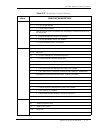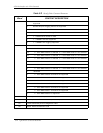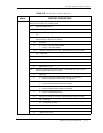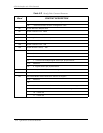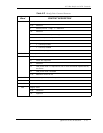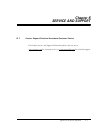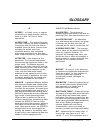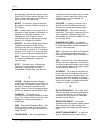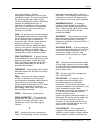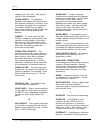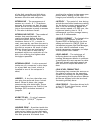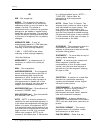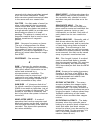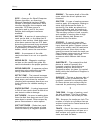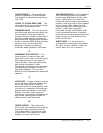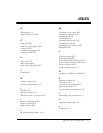
Glossary
Quickview 40 20/30/40GB AT G-3
term data integrity. Defect
management eliminates the need for
user defect maps. This is accomplished
by scanning the disk drives at the
factory for defective sectors. Defective
sectors are deallocated prior to
shipment. In addition, during regular
use, the drive continues to scan and
compensate for any new defective
sectors on the disk.
DISK – In general, any circular-shaped
data-storage medium that stores data
on the flat surface of the platter. The
most common type of disk is the
magnetic disk, which stores data as
magnetic patterns in a metal or
metal-oxide coating. Magnetic disks
come in two forms: floppy and hard.
Optical recording is a newer disk
technology that gives higher capacity
storage but at slower access times.
DISK CONTROLLER – A plug-in board,
or embedded circuitry on the drive, that
passes information to and from the
disk. The Maxtor disk drives all have
controllers embedded on the drive
printed-circuit board.
DISKWARE – The program instructions
and data stored on the disk for use by
a processor.
DMA – Acronym for direct memory
access. A process by which data
moves directly between a disk drive (or
other device) and system memory
without passing through the CPU, thus
allowing the system to continue
processing other tasks while the new
data is being retrieved.
DRIVE – Short form of disk drive.
DRIVE GEOMETRY – The functional
dimensions of a drive in terms of the
number of heads, cylinders, and
sectors per track. See also logical
format.
E
ECC – Acronym for error correction
code. The recording of extra verifying
information encoded along with the
disk data. The controller uses the extra
information to check for data errors,
and corrects the errors when possible.
EMBEDDED SERVO – A timing or
location signal placed on the disk’s
surface on the tracks that also store
data. These signals allow the actuator
to fine-tune the position of the
read/write heads.
ENCODING – The protocol by which
particular data patterns are changed
prior to being written on the disk
surface as a pattern of On and Off or 1
and 0 signals.
EXTERNAL DRIVE – A drive mounted
in an enclosure separate from the PC or
computer system enclosure, with its
own power supply and fan, and
connected to the system by a cable.
F
FAT – Acronym for file allocation table.
A data table stored on the outer edge
of a disk that tells the operating system
which sectors are allocated to each file
and in what order.
FCI – Acronym for flux changes per
inch. See also BPI.
FILE SERVER – A computer that
provides network stations with
controlled access to shareable
resources. The network operating
system is loaded on the file server, and
most shareable devices (disk
subsystems, printers) are attached to
it. The file server controls system
security and monitors
station-to-station communications. A
dedicated file server can be used only
as a file server while it is on the
network. A non dedicated file server
can be used simultaneously as a file
server and a workstation.
FLUX DENSITY – The number of
magnetic field patterns that can be
stored in a given length of disk surface.
The number is usually stated as flux



